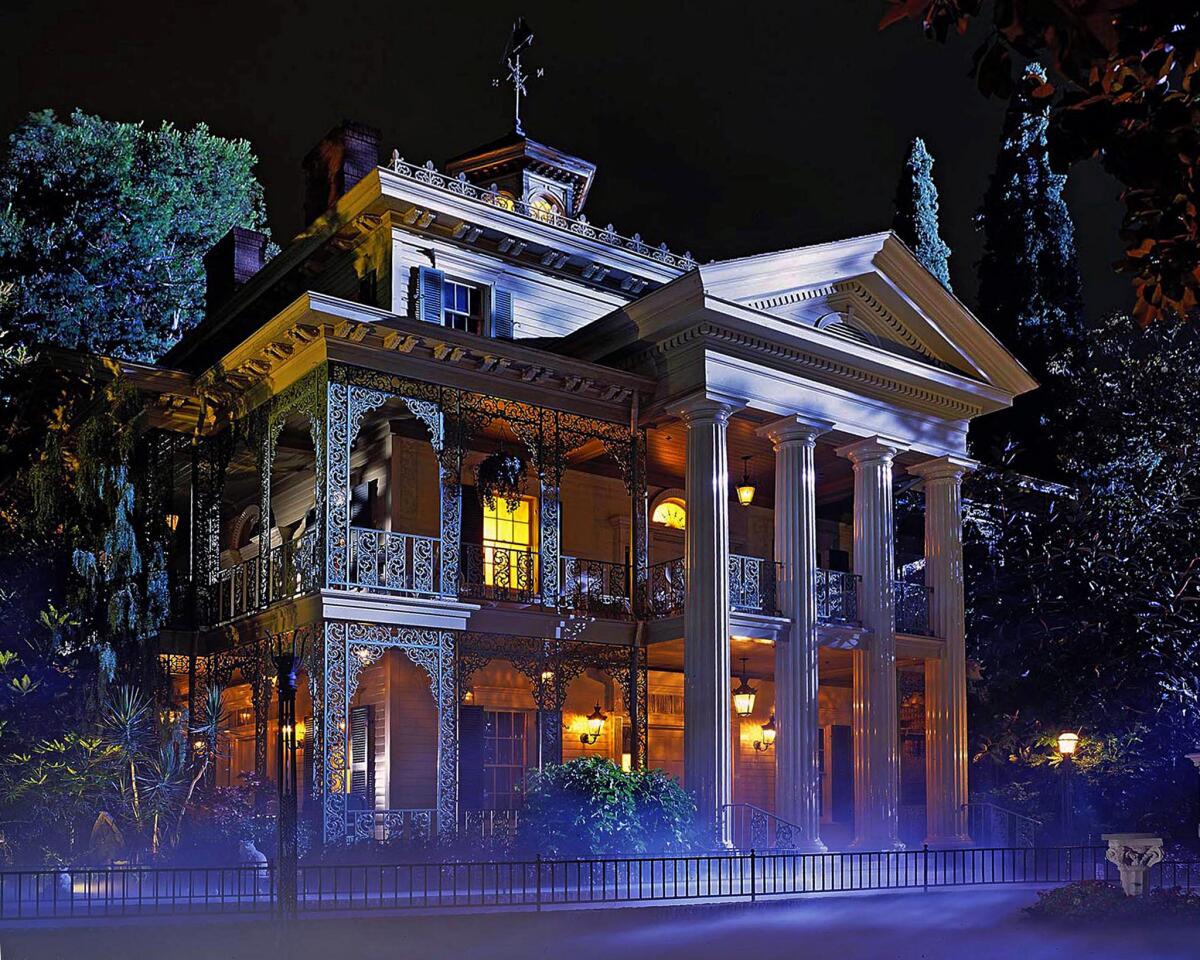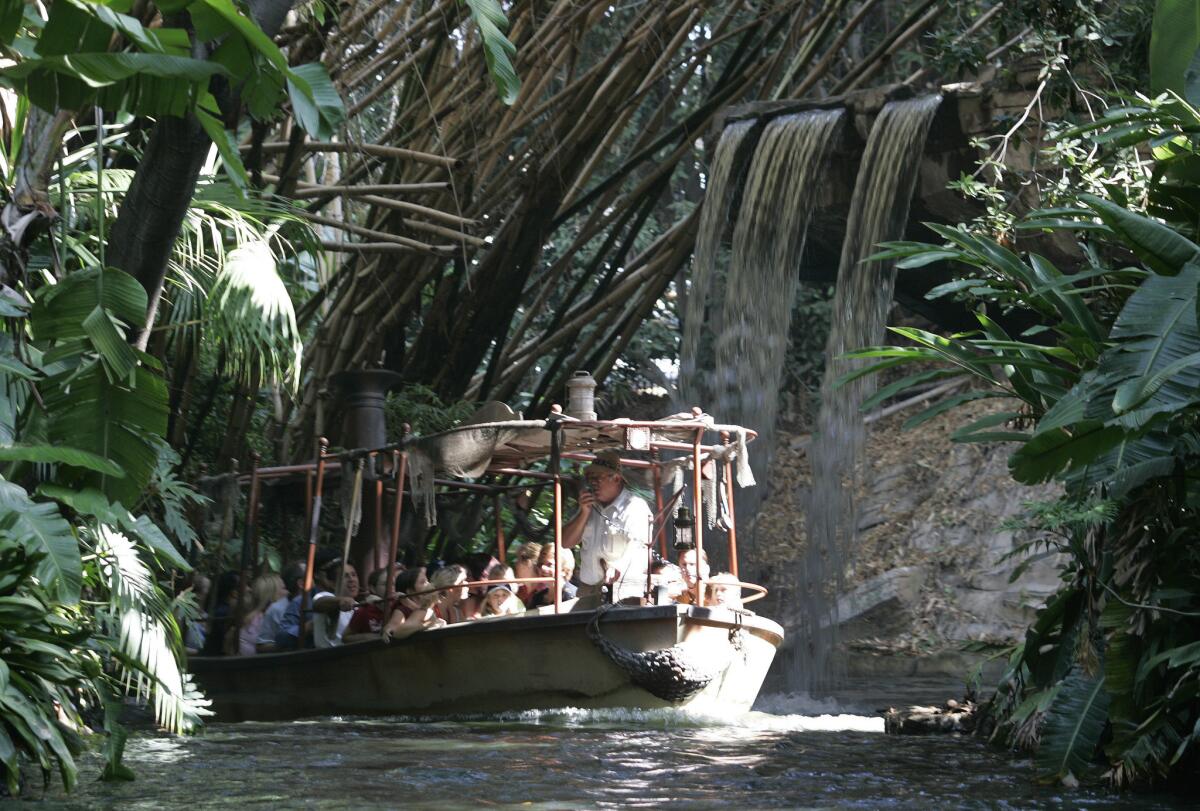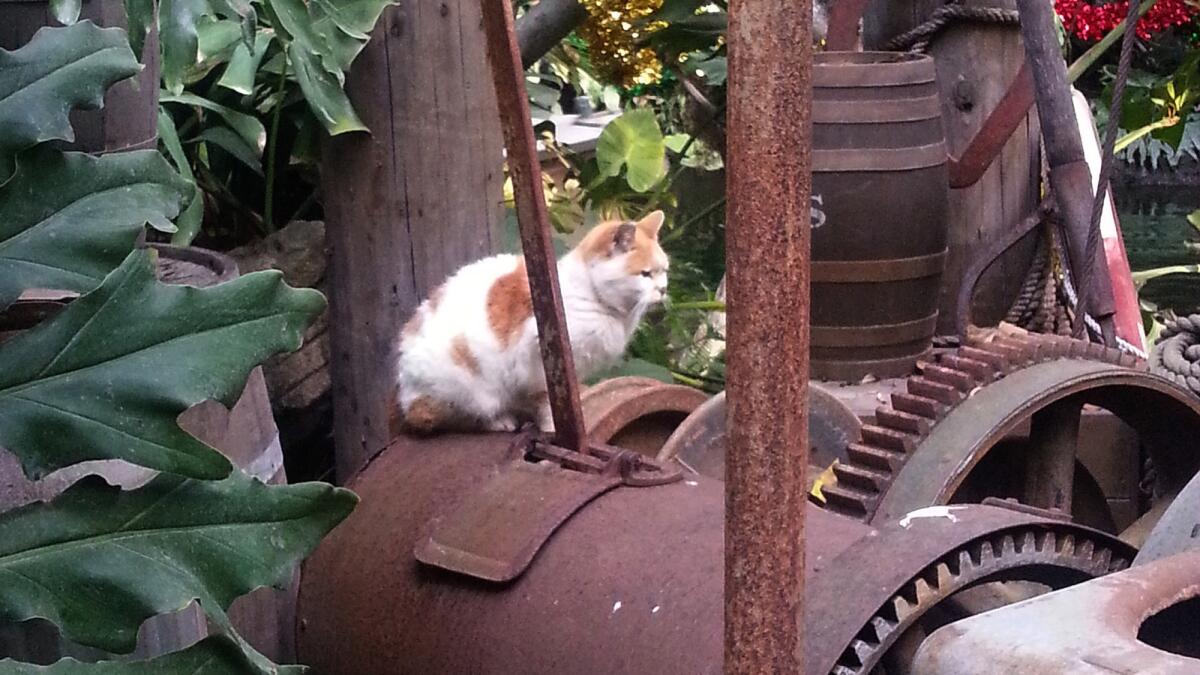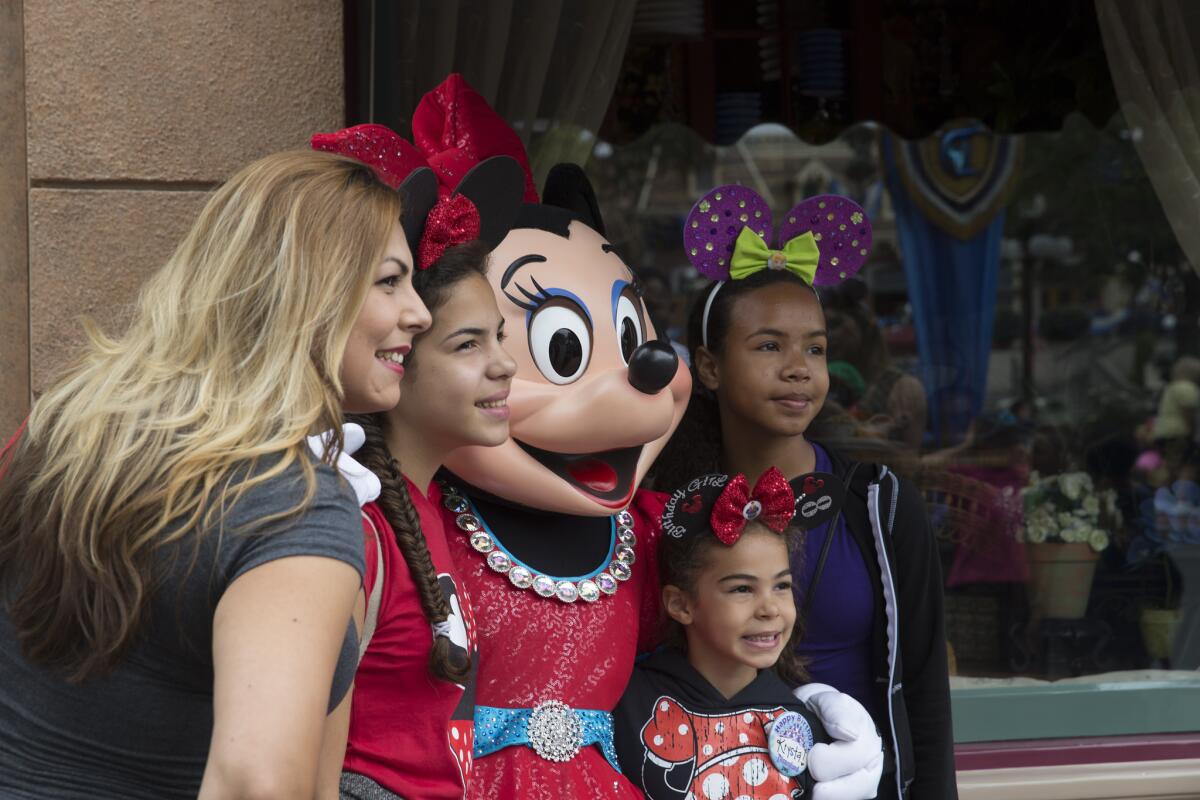Spoiler alert! As Disneyland turns 60, we reveal some of the Magic Kingdom’s secrets

This New Orleans Square attraction opened August 9, 1969 and is the home of 999 happy haunts - but there is “always room for one more” as DIsneyland park guests take a spirited tour aboad their doom-buggy.
Sandra's seen a leprechaun,
Eddie touched a troll,
Laurie danced with witches once,
Charlie found some goblins' gold.
Donald heard a mermaid sing,
Susy spied an elf,
But all the magic I have known
I've had to make myself.
-- Shel Silverstein's "Magic," from "Where the Sidewalk Ends"
So Walt Disney made it himself.
He injected his Magic Kingdom into a world just a decade removed from a war in which as many as 60 million people had died, the fury of the atomic bomb had been unleashed and the scope of the most evil genocide the world had ever known had become horrifyingly clear.
Bring on the pixie dust.
There's a ton of it at Disneyland, but it takes various forms, including buildings constructed in decreasing scale to make them look bigger and a small army of maintenance people deployed to keep the theme park aglow.
If you are a believer in pure magic — that is, mystical things that happen without help from outside forces — please stop reading now. There may be spoilers here that will burst your balloon.
With help from David Koenig's book "Mouse Tales: A Behind-the-Ears Look at Disneyland," Jim Korkis' "The Vault of Walt: Volume 3: Even More Unofficial Disney Stories Never Told" and Los Angeles Times archives, we're lifting, ever so slightly, the veil on the Magic Kingdom, where things mostly go right but occasionally go amazingly wrong, because sometimes you just don't know what you don't know.

For instance, those gators you saw once upon a time at the entrance to the much-loved Jungle Cruise? They were real, rent-a-gators brought in from a Buena Park farm and corralled at the entrance to the attraction.
Two problems with this: First, alligators hiss, which isn't very friendly. Second, people thought they were fake, so they would toss snacks in the pens. The reptiles eventually were banished, especially after their toothy grins sometimes revealed popcorn kernels.
And speaking of grins, Disney was said to be obsessive about cleanliness to the point that someone was assigned to brush the teeth of Monstro the whale. (Monstro was fake, of course.)
Everything needed to look great all the time, which was also why light bulbs under Disney were replaced when they had reached about 80% of their life. No dim bulbs here. Spick-and-span.
Except in the Haunted Mansion, where 5-pound bags of dust are brought in and spread around. That dust has been joined, it's been said, by human remains.
You're not allowed to sprinkle cremated remains anywhere in Disneyland; in November 2007, the Pirates of the Caribbean ride was shut down after a woman was seen throwing something in the water. The Walt Disney Co. never confirmed what that was, but the blogosphere lighted up with reports that the "Happiest Place on Earth" sometimes was the final place on Earth for Aunt Agnes.

There's another important kind of dust that's used at Disneyland for those times when, say, whirling teacups best the sturdiest stomach. The magic potion is called Barf Dust. The cat litter-like substance helps contain the damage.
Real cats help contain some of the other problems at the park. Think of them as four-footed fairies. It's California, after all, and where you have vegetation, food and water, you're bound to have rodents. Hard to believe that Mickey is not offended by this cat clique, but there have been enough feline sightings in the park to have warranted Twitter and Instagram accounts paying homage to the rat killers.
If you see a cat in the park, it's probably real. If you're seeing what looks like a gigantic Sleeping Beauty Castle and a Matterhorn that looks impossibly tall, these are only partly real. Of course, we know they are not real at all, but we are talking scale here. With the castle, the stones at the bottom of the fortress start big and get progressively smaller, like the shrubs on the Matterhorn. All part of the visual sleight of hand.

Minnie Mouse pauses for a photo with fans at Disneyland in Anaheim, Calif.
Of course, those costumed characters you see all over the park look neat and clean all the time. The "face characters" also tend to be attractive, not too thin, but proportioned so medium-size costumes fit them. At Disneyland, one size must fit all.
And it's not just the characters that have to be neat. The animatronics also are held to a standard, but the cleanliness issues tend to arise inside their clothing when fluids — we mean oil and such —sometimes leak. Clothing is made with easy-release features so their dirties can be stripped off easily.
The animatronics usually are well behaved, but that's not always the case for park employees. Once, one of the elephants at the Jungle Cruise was outfitted with a diaper. Another time, a Small World doll was wearing a black brassiere. We are not sure why.
What is certain is that if you've heard the theme from — stop reading right now if you're prone to having a song catch in your head — "It's a Small World," you're hearing the results of a request for the writers to create something that mimicked "Row, Row, Row Your Boat."
Disney paid a surprise visit one day to the tune writers, and, caught off-guard, they played their simplest song for him. They hadn't thought that ditty would pass muster, so they had written two others. But Disney said OK to the first one.
Surprisingly, Small World was the subject of unhappiness and controversy early on. It was designed for the 1964 World's Fair in New York and featured as "Pepsi Presents Walt Disney's 'It's a Small World' — a Salute to UNICEF and the World's Children." Even though Pepsi's name was attached to it, it was said that the soft-drink giant didn't think the attendant glow did enough to promote its product.

Guests take a relaxing ride through It’s a Small World at Disneyland. Just try to get that tune out of your head. Just try!
If you love Small World, thank Joan Crawford, who told Pepsi's board of directors, of which she was a member, that this show would go on. (You'll recall from the movie "Mommie Dearest" that she had a fairly antagonistic relationship with the board, suggesting in a cinematic roar that messing with her was a fairly bad idea.)
And so it did go on. Magic, you see, often takes many forms.
IN THE LOOP: Sign up for our weekly theme parks newsletter
DISNEYLAND AT 60: How 'The Happiest Place on Earth' is celebrating
Sign up for The Wild
We’ll help you find the best places to hike, bike and run, as well as the perfect silent spots for meditation and yoga.
You may occasionally receive promotional content from the Los Angeles Times.




